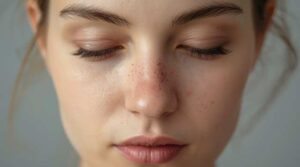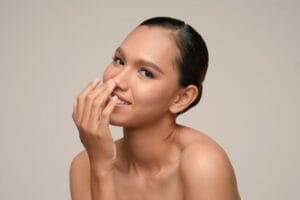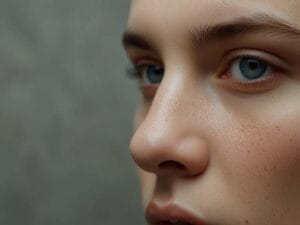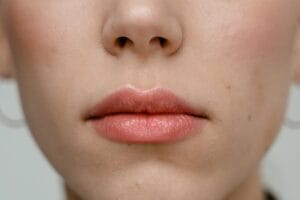Rhinoplasty for Men vs. Women: Why Gender Matters in Nose Surgery
A man walks into a rhinoplasty consult with screenshots of a celebrity nose. It’s lovely—delicate curve, a little tip rotation, narrow bridge.
Also? Totally wrong for him. Not because it isn’t “good,” but because it isn’t good for his face.
That’s the real secret of rhinoplasty: context. A nose lives among your other features—jawline, brow, cheekbones, lips—and those read as more masculine or feminine.
Put a soft, upturned, narrow nose on a square-jawed, strongly browed face and it doesn’t look “nice,” it looks off. Flip it the other way—keep a broad, straight, low-rotation nose on a fine-boned face—and you lose the elegance that makes feminine profiles look balanced.
So yes, gender matters. Not because men and women want different things (most people want the same three outcomes: natural, harmonious, and better breathing), but because the route to get there—angles, proportions, techniques, and even the social side of recovery—changes by gender and gender presentation.
What follows is a friendly, thorough walkthrough of those differences: the anatomy that sets the stage, the design choices that shape the look, the surgical moves that get you there, and the recovery and mindset pieces that often get overlooked.
Anatomical Differences: Why Male and Female Noses Are Structurally Different
Before we talk style, let’s talk structure. Form drives function—and what’s possible.
Size and Projection
Male noses:
- Generally 10-15% larger in all dimensions
- Greater projection from the face
- Longer from radix (root) to tip
- Wider bridge and nostrils
- More substantial bone and cartilage structures
Female noses:
- Smaller, more delicate proportions
- Less projection relative to facial features
- Shorter overall length
- Narrower dimensions throughout
- Finer cartilage and smaller bones
Why it matters surgically:
With men, there’s usually more material to shape—so smaller, thoughtful reductions can go a long way. With women, finer frameworks reward precision; tiny changes are visible and meaningful.
Nasolabial Angle: The Gender-Defining Measurement
The nasolabial angle—measured between the columella (the tissue between nostrils) and upper lip—is perhaps the most gender-defining nasal characteristic.
Ideal male nasolabial angle:
- 90-95 degrees (some sources say 95-105 degrees)
- Creates straighter, more angular profile
- Minimal tip rotation
- Columella more perpendicular to upper lip
Ideal female nasolabial angle:
- 100-110 degrees (some sources say 105-115 degrees)
- Creates softer, slightly upturned appearance
- Gentle tip rotation
- More acute angle suggesting refinement
The 10-degree difference:
Sounds minor. Isn’t. A ~110° angle on a male face reads feminine; a ~95° angle on a female face can feel heavy. Those few degrees change the “vibe.”
Skin Thickness and Texture
Male patients:
- Significantly thicker skin (15-25% thicker on average)
- Larger pores and oil glands
- Thicker subcutaneous tissue layer
- More sebaceous (oily) skin
Female patients:
- Thinner, more delicate skin
- Smaller pores
- Less subcutaneous tissue
- Generally less oily
Surgical implications:
- Thicker male skin hides finesse early; patience pays off (12–18 months for tip definition isn’t unusual)
- Thinner female skin shows detail sooner (often 10–12 months)
- To “show” through thick skin, men often need stronger structural changes; women often benefit from delicate, exacting refinements
Cartilage Strength and Bone Structure
Male nasal structures:
- Thicker, stronger cartilage
- More robust bone structure
- Greater structural support
- Cartilage has more “spring” and resistance
Female nasal structures:
- Finer, more delicate cartilage
- Less substantial bone
- Less inherent support
- More pliable cartilage
Technical considerations:
Male noses often need sturdier grafts and firmer suture work to hold shape under thicker skin. Female noses benefit from gentle handling to preserve support while creating definition.
Aesthetic Goals: What Men Want vs. What Women Want
Once you know the canvas, you can paint the picture. And the pictures differ.
Male Rhinoplasty Aesthetic Goals
Preserve masculinity:
- Maintain strong, angular appearance
- Avoid over-refinement or delicacy
- Keep straight or slightly convex profile
- Preserve breadth and substance
Achieve natural strength:
- Straighter bridge (minimal concavity)
- Defined but not overly narrow tip
- Minimal tip rotation
- Strong, clear angles
Create harmony:
- Nose proportionate to strong facial features (jawline, brow, cheekbones)
- Balance with masculine facial framework
- Maintain ethnic characteristics when appropriate
- Avoid “operated” appearance
Common male patient requests:
- Reduce dorsal hump while maintaining straight profile
- Narrow overly wide bridge without feminizing
- Refine bulbous tip without creating delicacy
- Straighten crooked nose
- Improve breathing while minimizing visible change
What men explicitly don’t want:
A “cute” or delicate tip, over-rotation, excessive narrowing, or anything that reads as “obviously done.”
Female Rhinoplasty Aesthetic Goals
Enhance femininity:
- Create soft, elegant contours
- Achieve refined, delicate appearance
- Gentle curves rather than angular lines
- Subtle, graceful proportions
Achieve classic feminine beauty:
- Slightly concave or straight bridge (never convex)
- Refined, defined tip with slight rotation
- Narrow bridge proportionate to facial features
- Smooth, flowing lines
Create balance:
- Nose that doesn’t dominate facial features
- Proportions that enhance eyes, lips, other features
- Harmony with feminine facial structure
- Natural, undetectable result
Common female patient requests:
- Remove dorsal hump for smooth profile
- Narrow bridge for more refined appearance
- Rotate and refine tip for feminine elegance
- Reduce overall size for better facial balance
- Correct asymmetry
What women explicitly don’t want:
A strong, heavy look; lingering hump; under-refined tip; or results that shout “surgery.”
The Overlap: What Both Genders Want
Despite differences, many goals are universal:
- Natural-looking results
- Improved facial harmony
- Maintained or improved breathing
- Ethnic feature preservation (when desired)
- Avoidance of “operated” appearance
- Enhanced confidence
Surgical Technique Differences
Design is the “what.” Technique is the “how.” Gender shapes both.
Bridge and Dorsum Modifications
In male patients:
- More conservative hump reduction
- Goal is straight profile, not concave
- Preserve width to maintain masculinity
- Avoid over-refinement of radix (root)
- Maintain strong, defined lines
In female patients:
- Often more substantial hump reduction acceptable
- Can create slight concavity for feminine elegance
- Greater narrowing often appropriate
- Radix can be refined more delicately
- Smoother, more flowing contours
Technical execution:
In men, preserve strength and straightness—over-reduction creates a “scooped” look that feminizes. In women, tasteful refinement (even gentle concavity) can elevate elegance—without tipping into “overdone.”
Tip Work: The Most Gender-Specific Element
Male tip rhinoplasty:
- Preserve or create defined, somewhat squared appearance
- Minimal rotation (avoid ski-slope effect)
- Maintain appropriate projection
- Create clean angles without excessive refinement
- Keep columella strong and visible
Female tip rhinoplasty:
- Create refined, slightly pointed or rounded tip
- Appropriate upward rotation (that 100-110° nasolabial angle)
- May reduce projection for softer profile
- Soften angles for elegance
- Gentle columellar show
Suturing techniques differ:
Male tips often need stronger grafts and sturdier sutures to project through thick skin. Female tips typically respond beautifully to fine suture techniques that sculpt subtle definition.
Nostril and Base Modifications
In men:
- Nostril reduction must preserve masculine proportions
- Base width maintained relative to facial width
- Avoid creating overly narrow, “pinched” appearance
In women:
- Greater nostril refinement often appropriate
- More significant base narrowing acceptable
- Can achieve more delicate proportions
Structural Support Considerations
Male rhinoplasty:
- Often requires substantial grafting for support (thick skin, large structures)
- Spreader grafts, tip grafts, columellar struts more commonly needed
- Stronger suturing required
Female rhinoplasty:
- May need less grafting (lighter structures, thinner skin)
- Grafts must be carefully sized to avoid creating too much structure
- Finer suturing appropriate
Recovery and Healing: Gender-Specific Considerations
Healing rules are similar for everyone, but the experience can feel different.
Swelling Resolution Timeline
Male patients:
- Thick skin = slower reveal (12–18 months for tip definition isn’t rare)
- Expect a gradual “unveiling” rather than a quick reveal
Female patients:
- Thinner skin = earlier clarity (often 10–12 months)
- Small changes show up sooner, for better or worse
Bruising and Visible Signs
Generally similar between genders, but:
- Men may bruise a bit more; many don’t mind as much
- Women often conceal bruising with makeup
- Social context differs (more on that next)
Physical Activity Restrictions
Male patients:
- Often more frustrated by exercise restrictions
- More likely to push boundaries and resume activity too early
- Greater risk of trauma from sports, roughhousing
- Need explicit guidance on return-to-gym timeline
Female patients:
- Generally more compliant with restrictions
- Less likely to engage in high-contact activities
- May be more concerned about yoga, pilates timeline
- Often more cautious about protecting healing nose
Psychological and Social Considerations
Here’s the part most people don’t talk about enough: the social side.
Social Stigma and Perception
Men face greater stigma:
- Cosmetic surgery still carries “vanity” connotations for men in many cultures
- May face teasing or judgment from peers
- Often less willing to openly discuss having surgery
- May feel pressure to conceal recovery (“broken nose” explanations common)
Women face more normalized expectations:
- Cosmetic surgery more socially acceptable for women in most contexts
- More willing to openly discuss procedures
- Larger support networks of women who’ve had similar work
- Less judgment from social circles
Impact on consultation:
Men may arrive more guarded—private browsing, fewer questions, big worries about anything looking “obvious.” Creating a judgment-free consult matters.
Surgical Approach: Closed vs. Open Rhinoplasty in Men and Women
Choosing the approach isn’t about gender alone—it’s about goals, anatomy, and surgeon preference. But gender does influence which approach is more commonly used.
Male Rhinoplasty: Often Closed (When Possible)
Why:
- Less tip rotation or major reshaping needed
- Thicker skin hides small imperfections
- Desire for minimal visible change
Advantages:
- No external scar
- Shorter swelling period
- More natural postoperative look early on
When open is preferred:
- Significant crookedness or asymmetry
- Major tip reshaping required
- Revision surgery
- Structural grafting for support
Female Rhinoplasty: Often Open (For Precision)
Why:
- More delicate adjustments desired
- Greater emphasis on tip definition and rotation
- Thinner skin reveals detail
Advantages:
- Direct visualization of tip cartilages
- Greater control over subtle refinements
- Predictable symmetry
When closed can work:
- Minor dorsal hump reduction
- Slight bridge refinement
- Minimal tip changes
Bottom Line
Neither technique is “better.”
Closed is efficient and preserves tissue.
Open offers precision and visualization.
Gender influences the likelihood—but not the rule.
Technical Nuances: The Moves Behind the Look
Each aesthetic goal translates into technical choices.
Here’s what those tend to look like for each gender.
Male Rhinoplasty Techniques
Bridge and Dorsum:
- Maintain straight or slightly convex line
- Conservative hump reduction
- Avoid over-lowering the bridge
- Emphasize strong radix (root of nose)
- Preserve masculine straight dorsum
Tip Work:
- Minimal tip rotation (no “lifted” look)
- Broader, less pinched shape
- Firm support using cartilage grafts
- Avoid excessive projection
Base and Width:
- Slight narrowing if necessary
- Maintain width proportionate to face
- Avoid over-narrowing which feminizes
Structure and Support:
- Reinforced framework (cartilage grafts often stronger)
- Focus on maintaining nasal strength and stability
- Prevent collapse under thicker skin
Female Rhinoplasty Techniques
Bridge and Dorsum:
- Gentle concavity (slightly scooped profile)
- Smooth transition from radix to tip
- Conservative dorsal reduction
- Preserve natural curves and flow
Tip Work:
- Refined, defined, slightly rotated tip
- Softer contour lines
- Careful suture techniques for subtle definition
- Slightly smaller, more delicate projection
Base and Width:
- Moderate narrowing for refinement
- Balanced with eyes and lips
- Maintain natural breathing
Structure and Support:
- Support grafts placed delicately
- Preserve function with minimal visible reinforcement
- Maintain long-term shape without stiffness
The Key Takeaway
Masculine noses rely on structure and straightness.
Feminine noses rely on refinement and flow.
Both rely on balance, proportion, and restraint.
Recovery and Healing Differences
Recovery isn’t gender-neutral.
Skin thickness, swelling, and even social expectations change the timeline and experience.
Male Recovery
Typical features:
- More swelling and longer resolution
- Tip definition takes 12–18 months
- Skin thicker and more sebaceous
- Early results may look “under-refined”
- Patience crucial
Emotional component:
- Men often want subtlety and anonymity
- Many are less comfortable with visible downtime
- Return to work/social life prioritized early
Practical advice:
- Cold compresses help control swelling
- Avoid gym/weights at least 3–4 weeks
- Expect longer refinement phase
- Early follow-ups important for reassurance
Female Recovery
Typical features:
- Less swelling overall
- Tip definition visible sooner
- Finer skin shows contour quickly
- Bruising may appear more noticeable initially
Emotional component:
- Women often anticipate aesthetic downtime
- More open to makeup concealment and staged recovery
- Often document healing progress
Practical advice:
- Gentle care for thinner skin
- Avoid sun exposure during healing
- Don’t rush into makeup too early (wait until cleared)
- Follow taping/massage guidance carefully
Shared Recovery Principles
- Elevate head for first week
- No glasses for 3–4 weeks unless taped
- Avoid bumping or pressure
- Follow saline cleaning and ointment care
- Patience—the “final” result is a marathon, not a sprint
Psychological and Social Aspects
Surgery doesn’t happen in a vacuum.
How people process it emotionally often tracks with gender norms and expectations.
Men and the “Subtle Change” Preference
Most men say they don’t want anyone to know.
Their measure of success: “No one noticed, but everyone says I look better.”
Implications:
- Under-correction preferred over over-refinement
- Avoid “tell-tale” features like lifted tip or narrow bridge
- Subtle confidence boost rather than transformation
Surgeon’s role:
Guide toward realistic subtlety while ensuring meaningful improvement.
Women and the “Refined Transformation”
Most women are comfortable with visible improvement—as long as it looks natural.
Their measure of success: “People say I look prettier, fresher, or softer—but not fake.”
Implications:
- Slightly bolder refinements acceptable
- More open to visible early changes
- Social media and documentation influence expectations
Surgeon’s role:
Balance refinement with restraint, prevent “cookie-cutter” noses.
The Shared Goal
Everyone—male, female, or nonbinary—wants authentic harmony.
The right rhinoplasty doesn’t change your identity; it reveals your best version of it.
Nonbinary and Gender-Affirming Rhinoplasty
Gender expression exists beyond two boxes.
Rhinoplasty can affirm identity by softening or strengthening traits to align appearance with self-image.
Feminizing Rhinoplasty
Common goals:
- Reduce bridge height and width
- Create gentle profile curve
- Add tip rotation and refinement
- Narrow base and nostrils
- Increase nasolabial angle
Masculinizing Rhinoplasty
Common goals:
- Strengthen bridge
- Straighten or add slight convexity
- Broaden base and nostrils subtly
- Reduce tip rotation
- Decrease nasolabial angle
The Core Principle
Gender-affirming rhinoplasty isn’t about imitation.
It’s about alignment—making the outer structure match the inner sense of self.
The same anatomy, the same instruments—but a completely different emotional endpoint.
Summary Table: Rhinoplasty Differences by Gender
| Feature | Male | Female |
|---|---|---|
| Bridge | Straight or slightly convex | Straight or slightly concave |
| Tip Rotation | Minimal (90–95°) | Slightly upturned (100–110°) |
| Tip Shape | Broad, firm | Refined, delicate |
| Bridge Width | Wider | Narrower |
| Nasal Length | Longer | Shorter |
| Skin Thickness | Thicker, more sebaceous | Thinner, finer |
| Cartilage/Bone | Stronger, more rigid | Finer, more pliable |
| Common Goal | Preserve strength and naturalness | Enhance softness and harmony |
| Preferred Approach | Closed (when possible) | Open (for precision) |
| Healing Time | Longer (12–18 months) | Shorter (10–12 months) |
| Aesthetic Concern | Avoid feminization | Avoid heaviness |
| Psychological Focus | Subtle change | Visible refinement |
Final Thoughts
Gender influences rhinoplasty—but it doesn’t dictate it.
Every nose has its own logic, proportions, and personality.
A good rhinoplasty surgeon doesn’t just create “a male nose” or “a female nose.”
They create your nose—harmonious, functional, and authentic to who you are.














Post Comment